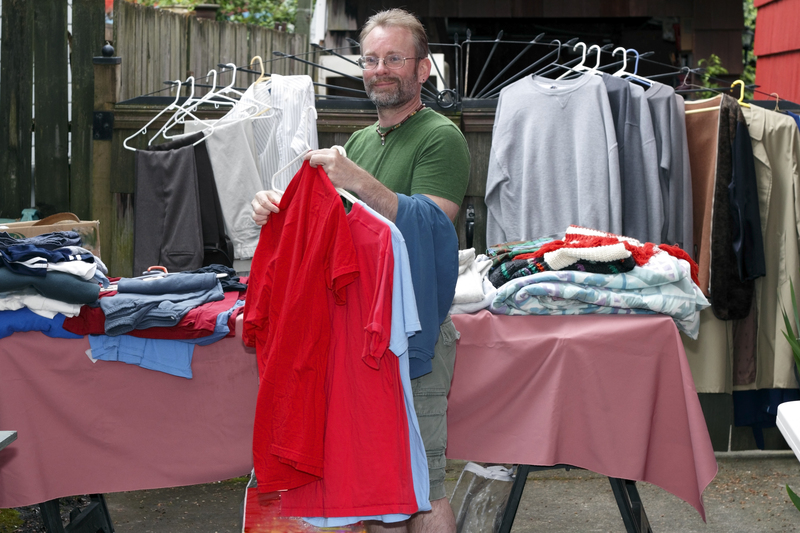Best Practices for Disposing of Used PPE Without Harming the Environment
The COVID-19 pandemic, along with growing awareness about occupational health and safety, has led to an unprecedented surge in the use of personal protective equipment (PPE). While this has been crucial for safeguarding individuals, it has created a major challenge: how can we safely and responsibly dispose of used PPE without harming the environment? Whether it's single-use masks, gloves, gowns, or face shields, improper disposal can lead to pollution, wildlife hazards, and increased landfill waste. This comprehensive guide explores the best practices for disposing of used PPE, offering actionable steps for individuals and organizations committed to environmental stewardship.
Why Proper PPE Disposal Matters
Disposing of PPE improperly has far-reaching consequences.
- Plastic Pollution: Most PPE items are made from synthetic materials like polypropylene, which take hundreds of years to decompose.
- Wildlife and Marine Hazards: Discarded gloves and masks can entangle, choke, or otherwise harm animals.
- Pandemic Risks: Used PPE contaminated with viruses or bacteria can spread pathogens if not properly handled.
- Public Litter: PPE litter undermines community cleanliness and can affect tourism, property values, and public health.

Types of PPE and Their Environmental Impact
Before outlining the best practices for environmentally responsible PPE disposal, it is essential to recognize the types of PPE and their respective impact on the environment.
Masks
- Single-use surgical masks: Usually made of polypropylene, they are not biodegradable or easily recyclable.
- Cloth masks: Reusable and generally have less environmental impact, but require regular washing and eventual disposal.
Gloves
- Nitrile gloves: Non-biodegradable, derived from synthetic rubber, and resistant to decomposition.
- Latex gloves: Can biodegrade, but if mixed with toxic substances, may pose environmental and health risks.
Gowns & Face Shields
- Disposable gowns: Polyethylene or polypropylene, adding to landfill waste.
- Face shields: Often made from PET or similar plastics, sometimes reusable with proper sanitation.
Best Practices for Disposing of Used PPE Responsibly
By embracing the following eco-friendly PPE disposal methods, we can minimize negative environmental impacts and foster a cleaner, healthier future.
1. Separate PPE Waste from Regular Trash
- Always dispose of used PPE in a designated bin or container, separate from recyclable materials and household waste.
- Clearly label bins for PPE waste to prevent contamination of recyclable streams.
- For businesses and organizations, create awareness campaigns so that all staff, visitors, and clients know where and how to dispose of PPE.
2. Do Not Litter or Flush PPE
- Never discard used PPE in public places, streets, waterways, or toilets. PPE can block sewage pipes and contribute to marine pollution.
- Encourage community action programs to pick up littered PPE in your local area.
3. Securely Contain Disposable PPE
- Double-bag masks, gloves, and other disposable items--even if they appear clean--to prevent accidental release or scavenging by animals and waste pickers.
- Tie bags tightly and avoid overfilling to maintain bag integrity during transport to landfill or incineration.
4. Follow Local Waste Management Guidelines
- Many governments and local councils have issued specific guidance on disposing of PPE without environmental hazard. Adhere strictly to these protocols, including requirements for hazardous waste streams.
- If PPE waste is classified as potentially infectious (as in healthcare or quarantine facilities), use the official biohazard disposal method.
5. Consider Incineration or Authorized Disposal Facilities
- For organizations generating significant PPE waste (e.g. hospitals, clinics, labs, and some offices), work with vetted waste management firms specializing in medical waste. These companies have the capability to safely incinerate hazardous materials at high temperatures, reducing pathogen risk.
- Incineration should be done in facilities equipped with pollution control technology--not in backyard or open fires, which release toxic emissions.
6. Avoid Burning PPE at Home
- Burning plastics and rubberized PPE at low temperatures (such as on household fires or bonfires) unleashes dangerous air pollutants, including dioxins and furans--chemicals known to cause cancer and respiratory illnesses.
- Always choose secure landfill or authorized disposal options in residential settings.
7. Shift to Reusable PPE Where Safe and Practical
- Reusable cloth masks and gowns can drastically reduce waste. Wash thoroughly according to health guidelines before reusing.
- Explore reusable visors, goggles, and face shields which can be sanitized and used multiple times, cutting down on single-use plastic waste.
8. Explore PPE Recycling Programs
- Some companies and non-profits now offer specialized PPE recycling services, turning single-use items into composite materials for paving blocks, construction, or new plastic products.
- Collect clean, dry PPE (where permitted) and send to participating recyclers. However, check local regulations and collector requirements.
9. Support Innovation and Responsible PPE Production
- Encourage manufacturers to design PPE from biodegradable, compostable, or easily recycled materials.
- Opt for certified eco-friendly masks or gloves if available in your area, even if these sometimes cost more.
10. Engage in Environmental Education and Advocacy
- Share information on the impacts of PPE pollution with friends, family, and colleagues through social media or community meetings.
- Encourage local authorities and businesses to install PPE-only waste bins and provide responsible disposal information to the public.
Creative Solutions for PPE Waste Reduction
Innovation is critical to addressing the global PPE disposal crisis without harming the planet. Here are some forward-thinking strategies for individuals, companies, and communities:
- PPE Upcycling: Certain non-contaminated items can be repurposed creatively for artwork, gardening, or industrial materials. Always handle with gloves and disinfect properly.
- Community Clean-up Days: Organize neighborhood drives focused on collecting littered masks and gloves, and working with partners for safe disposal.
- Government Incentives: Lobby for tax breaks or grants supporting biotech and recycling companies committed to sustainable PPE solutions.
- Smart PPE Tracking: Technologies such as QR codes or RFID tags on PPE gear to trace usage and ensure streamlined collection and recycling.
Addressing Common Myths About PPE Disposal
-
Myth: PPE is harmless if it's put in any trash bin.
Fact: PPE in mixed-waste bins can contaminate recyclables and poses risks to workers. -
Myth: All PPE can be recycled.
Fact: Most single-use PPE isn't accepted in normal recycling streams; specialized recycling programs are required. -
Myth: Burning PPE at home is safe.
Fact: Home incineration releases toxins dangerous to human health and the environment. -
Myth: PPE decomposes quickly as it's just "cloth or paper."
Fact: Most masks and gloves are made of plastics that can persist for centuries in the environment.
PPE Disposal in Different Sectors
Different environments generate varying amounts and types of PPE waste. The following guidelines address the specific needs of households, healthcare, workplaces, and public spaces.
Household PPE Waste
- Double-bag used masks, gloves, and wipes before disposing of them in the regular trash.
- For residents with COVID-19 or infectious diseases, follow local advice on hazardous waste pickup.
- Place trash out on collection day; avoid storing PPE waste bags open or for extended periods.
- Try to opt for reusable masks and hand sanitizers to cut down on disposable waste.
Healthcare Facilities
- Mandate color-coded, clearly labeled bins for all types of PPE waste.
- Ensure staff undergo regular training on the latest PPE disposal rules.
- Engage licensed medical waste processors equipped for autoclave or incineration.
- Track and report hazardous PPE waste volumes to comply with regulatory requirements.
Workplace and Commercial Settings
- Install visible PPE-only disposal points throughout offices, shops, and factories.
- Schedule routine waste checks to prevent improper sorting.
- Promote staff education on the environmental hazards of poor PPE disposal.
- Form partnerships with eco-conscious waste companies for collection and treatment.
Public Spaces
- Add dedicated PPE litter bins in parks, streets, airports, and stations.
- Encourage mask "take-back" programs for environmentally friendly collection and recycling.

Regulations and Global Initiatives for Green PPE Disposal
Governments and international organizations are enacting regulations and launching campaigns to address the environmental impact of PPE waste. Some notable efforts include:
- World Health Organization (WHO): Issues technical guidance on healthcare waste management during pandemics.
- European Union: Directives on the safe collection, transport, and final treatment of medical and PPE waste.
- Local Authorities: Many cities now operate PPE-specific collection programs and awareness drives.
- Industry Certifications: Programs advocating for biodegradable PPE production and supply chain transparency.
Conclusion: Safeguarding Health and Planet with Responsible PPE Disposal
As the world adapts to ongoing public health concerns, balancing personal safety with environmental stewardship is more important than ever. By adopting best practices for disposing of used PPE, we can protect both ourselves and the natural world.
Remember: Always separate PPE waste, avoid littering or burning, and support initiatives driving innovation in eco-friendly PPE and recycling solutions. Awareness, education, and small changes in daily habits collectively have the power to make a significant positive impact. Let's take responsibility for how we dispose of masks, gloves, and other protective gear--ensuring a safer, cleaner future for everyone.
For further reading and updates on sustainable PPE disposal, consult your local health department, waste management service, or reputable environmental organizations.
```